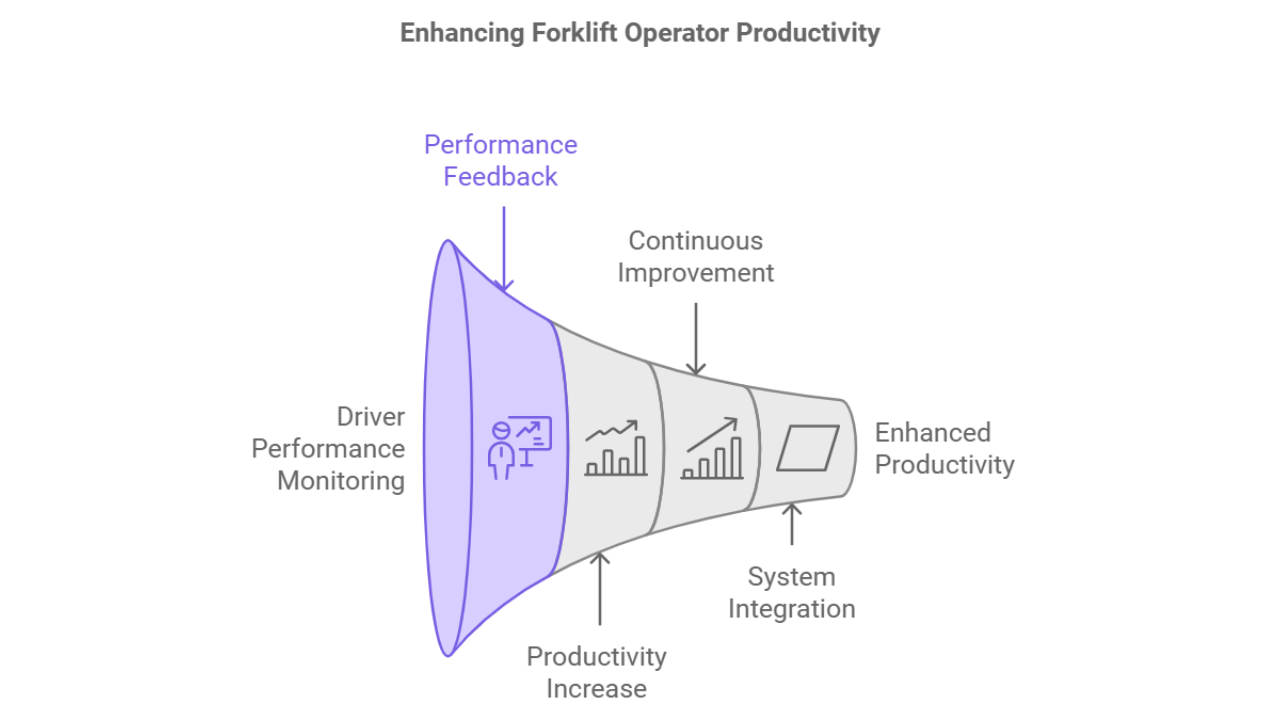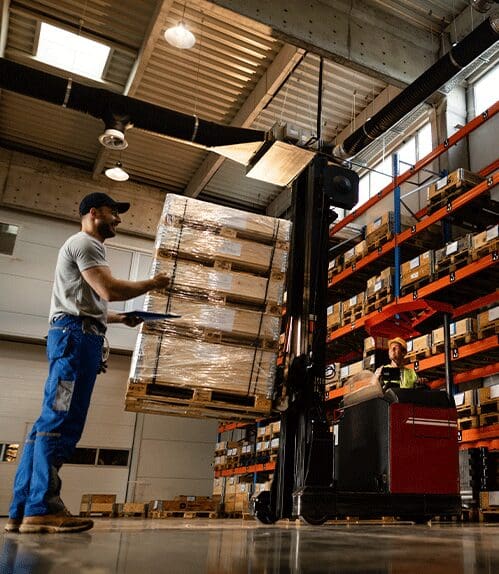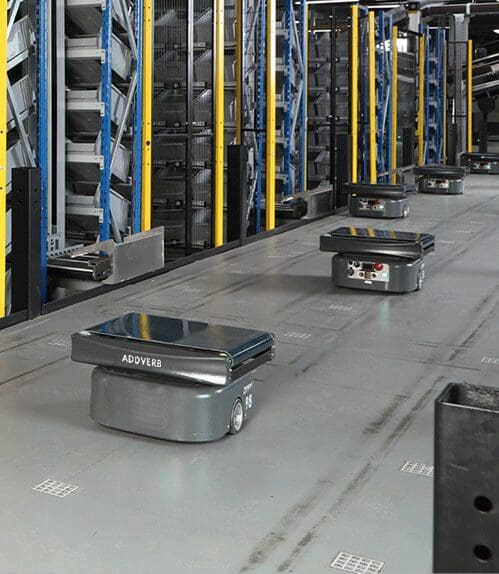Table of Contents
The autonomous forklift market has grown significantly in recent years due to rising automation in manufacturing sector. It is projected to reach USD 5,300.9 million by 2024 and is expected to grow at a CAGR of 8.9%, with a potential to reach USD 12,450 million by 2034 (futuremarketinsights)
Modern warehouses have evolved both in terms of their layout and technologies. And yet, forklifts remain an indispensable asset in the warehousing world. As an essential part of the transportation system, these robust machines act as the means for goods on the move across the warehouse floor, between unloading zones to storage shelves, and ultimately to dispatch areas.
However handling large volumes, both in terms of number and size, without an autonomous forklift can result in inventory flow disruptions. It’s crucial that they deliver a high performance and deliver a clear return on investment (ROI) to justify their hefty price tags. Fortunately, forklift operations optimisation can serve as an opportunity to save money, improve safety in the warehouse, as well as improve space utilisation.
A recent industry survey indicates that as many as 94 percent of material handling businesses have no ability to track usage of their forklift fleet (Logistics Management, 2023).
The advancement of Internet of Things (IoT) technology has led to the emergence of autonomous forklifts capable of automating material movement. These vehicles provide insights and efficiency gains that traditional methods cannot replicate. Autonomous forklifts not only increase the output of the warehouse but also help increase the safety levels of the warehouse. Below are some salient features:
Real-Time Forklift Movement Tracking
As forklifts occupy a lot of space in a warehouse, it is imperative to understand their movement. Real-Time systems (RTLS) equipped in autonomous forklifts allow warehouse managers to analyse entire routes, speeds, and performance metrics.
Key questions that these systems answer include:
Are forklifts carrying optimal weight by the kilometer?
What does it travel without a load for, and how can this be minimised?
What operators consistently beat or meet performance targets?
With this data, operators can refine autonomous forklift routes, cut empty travel, and make productive trips. RTLS goes beyond vehicle location tracking to provide insight into driver performance, allowing for targeted training to improve fleet efficiency.

With Data-Driven Insights Enhancing Safety
Having an ambient space for people and machinery movement in a warehouse environment is critical. Autonomous forklifts can take on board continuous real-time data on operational conditions so that they can regularly carry out self-surveillance, and safety managers can rely on the data to determine safe routes and load capacities. Real-time tracking of density using data analytics can advise autonomous forklifts where other less congested pathways are available and lower collision risk.
Furthermore, capturing speed profiles makes it possible to identify risky behaviors and to schedule targeted training. Risks and the corresponding implementation of data-driven safety protocols can be mitigated in the workplace. Some recent National Safety Council research shows that integrating IoT technologies can cut 25 percent of the accidents that occur at work.
Analytics to Maximise Warehouse Space
Evolving customer demands and a wide product line required dynamic slotting and flexible storage. The analytical capabilities of an autonomous forklift are automated to create movement data maps within warehouse layouts. To analyse the most frequent routes, it can create routing pattern heat maps that pinpoint areas where vehicles are underutilised (or where bottlenecks are creating unnecessary time and space wasting).
Using these insights, warehouses can now optimally slot items, i.e. classify items as A, B, or C for minimum travel distance. Not only does this increase access to inventory but also streamlines forklift travel. Warehouse Efficiency’s report from 2023 shows that with storage space optimization technologies, storage space can increase up to 20 percent without additional physical space.
Increase in Forklift Operator’s Productivity

Automated forklift systems constantly monitor driver performance, showing feedback on a driver’s strengths, weaknesses, and productivity trends. Performance analytics enable organizations to increase operator productivity by an impressive 22%, as noted by the Supply Chain Management Journal 2023.
With its Automated Move platform, the operator get detailed insight into their driving patterns that allow for continuous improvement. It can help in creating strategies to monitor and combat fatigue and stop productivity from going down altogether. These systems can be integrated with Warehouse Management Systems (WMS) so that maintenance, battery management, and operator performance information flow effortlessly between the systems, which are key considerations to maintaining the flow of productivity in a safe work environment.
Environmental Sustainability
Integration of automated forklifts helps to lower carbon emissions. The advanced systems optimise routes and minimise energy waste, improving sustainability efforts.
Automated forklifts continue to evolve driven by IoT technologies, and we can expect many potential benefits from efficiency, safety, and sustainability. These innovations will be vital to future warehouse adaptation to market demands, to remain competitive, to increase productivity, and to develop safer work environments.
End Note
Addverb’s autonomous forklift, the FlowT, utilizes innovative LiDAR-based SLAM technology for precise navigation. This allows it to effortlessly maneuver through any warehouse environment, ensuring smooth operations day in and day out. Say goodbye to navigation errors and hello to an uninterrupted workflow!
But the FlowT offers much more than just the basic navigation—with integrated camera-based systems, it provides dynamic pallet detection, further enhancing its capabilities and maximizing efficiency in material handling. What truly sets the FlowT apart is its versatility—whether you need to manage floor-level operations or reach various elevations, the FlowT has you covered. It is available for ground-to-ground, ground-to-1.5m, and ground-to-3m handling, making it adaptable to a wide range of logistical challenges and providing solutions for every scenario.
The implementation of such automated forklifts not only boosts driver productivity and warehouse operational efficiency but also enhances safety and sustainability within the warehouse environment. For warehouses, these data-driven insights can be integrated into everyday operations, leading to further improvements.
FAQ
What are autonomous forklifts?
Autonomous forklifts are self-operating vehicles equipped with sensors and software that allow them to navigate and transport materials without human intervention.
What are the benefits of using autonomous forklifts?
They improve efficiency, reduce labor costs, enhance safety, and minimize human error in material handling tasks.
Are autonomous forklifts safe to use?
Yes, they are designed with safety features such as sensors and emergency stop functions to detect obstacles and prevent collisions.
Can autonomous forklifts work alongside human operators?
They are built to operate in mixed environments and can safely work alongside human staff.
What industries can benefit from autonomous forklifts?
Industries such as manufacturing, logistics, warehousing, and distribution centers can significantly benefit from integrating autonomous forklifts.
Founded in 2016, Addverb offers complete robotics solutions for warehouse and industrial automation, with a strong global presence through its subsidiaries worldwide. The company provides a range of in-house automation products, including Autonomous Mobile Robots, ASRS, and sorting technologies. It serves over 350+ clients, including well-known companies such as Coca-Cola, Amazon, and DHL.







